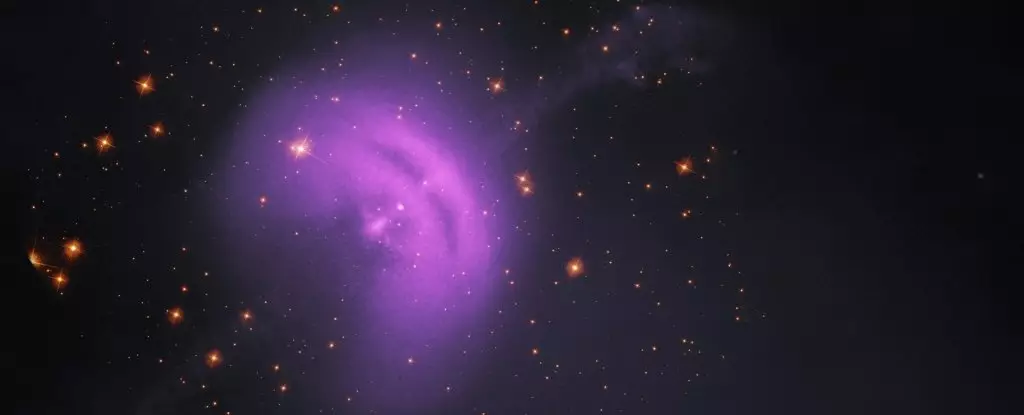Cosmic rays represent one of the universe’s most enigmatic phenomena, with high-energy particles bombarding Earth continuously. While our planet is protected by a robust atmospheric shield, the constant influx of cosmic rays raises fascinating questions about their origins and implications for our understanding of astrophysics. Recent research from the H.E.S.S. (High Energy Stereoscopic System) Observatory in Namibia has sparked interest by unveiling the presence of cosmic-ray electrons (CRe) that possess unprecedented energy levels. The findings not only offer crucial insights into the sources of these particles but also hint at their relatively nearby origins within our galaxy.
The H.E.S.S. Observatory’s groundbreaking observations have identified electrons and positrons with energies reaching an astounding 40 teraelectronvolts. This discovery represents the highest energy levels ever recorded for cosmic-ray electrons striking Earth’s atmosphere. Kathrin Egberts, an astrophysicist affiliated with the University of Potsdam, notes that the energies observed suggest these particles likely originated from a localized region relatively close to our Solar System, estimated to be within a few thousand light-years. This finding marks a pivotal step in identifying potential sources of cosmic rays, narrowing the field from the vast expanse of the Milky Way to a significantly smaller volume of space.
CRe constitute only a small fraction of all cosmic ray particles, and their formation is attributed to extreme cosmic events such as supernova explosions, interactions around black holes, or dense remnants of stars known as pulsars. These cosmic phenomena accelerate particles to unimaginable speeds, sending them spiraling into the universe. Upon colliding with Earth’s atmosphere, these particles create an observable phenomenon known as Cherenkov radiation. This subtle luminescence, akin to a sonic boom, results from the particles surpassing the speed of light in the atmosphere. The H.E.S.S. Observatory, equipped to detect this faint radiation, plays a critical role in studying these high-energy events.
Despite the advancements in detecting CRe, distinguishing these charged particles from gamma rays, which are uncharged photons, poses significant challenges for researchers. The chaotic paths of charged particles in the magnetic field complicate source identification, as opposed to the straightforward trajectories of gamma rays. Astronomer Mathieu de Naurois elaborates on this difficulty, explaining that while gamma rays can be tracked back to their origin, the trajectories of CRe are unpredictable due to their affinity for interacting with magnetic fields. This complicates the assessment but does not deter scientists from analyzing H.E.S.S. data to identify potential candidates for these extraordinary cosmic particles.
To ascertain the origins of the high-energy CRe detected, researchers meticulously analyzed the extensive data collected by H.E.S.S. While the final list may inadvertently include some gamma rays, the pooled data still enables valuable statistical conclusions. The rarity of CRe with energies exceeding one teraelectronvolt arises from their propensity to lose energy as they traverse space. Insights into mechanisms such as synchrotron radiation and Inverse Compton Scattering reveal that as these charged particles interact with the interstellar medium, they radiate energy, diminishing their potential strength by the time they reach Earth.
The sharp delineation at a lower cut-off energy point of 1.17 teraelectronvolts further corroborates the hypothesis that only a limited number of sources contribute to the observed particles. This sharp energy change suggests a singular or near-singular origin rather than a smooth distribution resulting from multiple cosmic sources—a pivotal finding that underscores the importance of ongoing research to unravel these cosmic enigma.
Given the relatively small volume of space from which these CRe are likely to emerge, researchers have narrowed their investigation to a handful of promising candidates. Among these are potential sources such as the Monogem Ring, a supernova remnant, or specific Wolf-Rayet stars, as well as well-known pulsars like Vela and Geminga. It’s also conceivable that the origin is an ancient supernova remnant that has since faded from direct observation, complicating efforts to identify its presence.
The meticulous work conducted by the H.E.S.S. team promises to deepen our comprehension of cosmic ray phenomena. Future investigations are poised to reveal potential directional patterns from which these high-energy CRe arrive—a pursuit that holds the potential for significant breakthroughs. The study marks not only a notable advance in our knowledge of cosmic-ray dynamics but also establishes a benchmark for future studies in astrophysics, as stated by de Naurois, highlighting the lasting impact these findings will have in the years to come.
The research emanating from the H.E.S.S. Observatory elucidates critical aspects of cosmic-ray electrons, mapping their local origins and hinting at the extreme cosmic events that may produce them, thus enhancing our understanding of the universe’s energetic processes.

